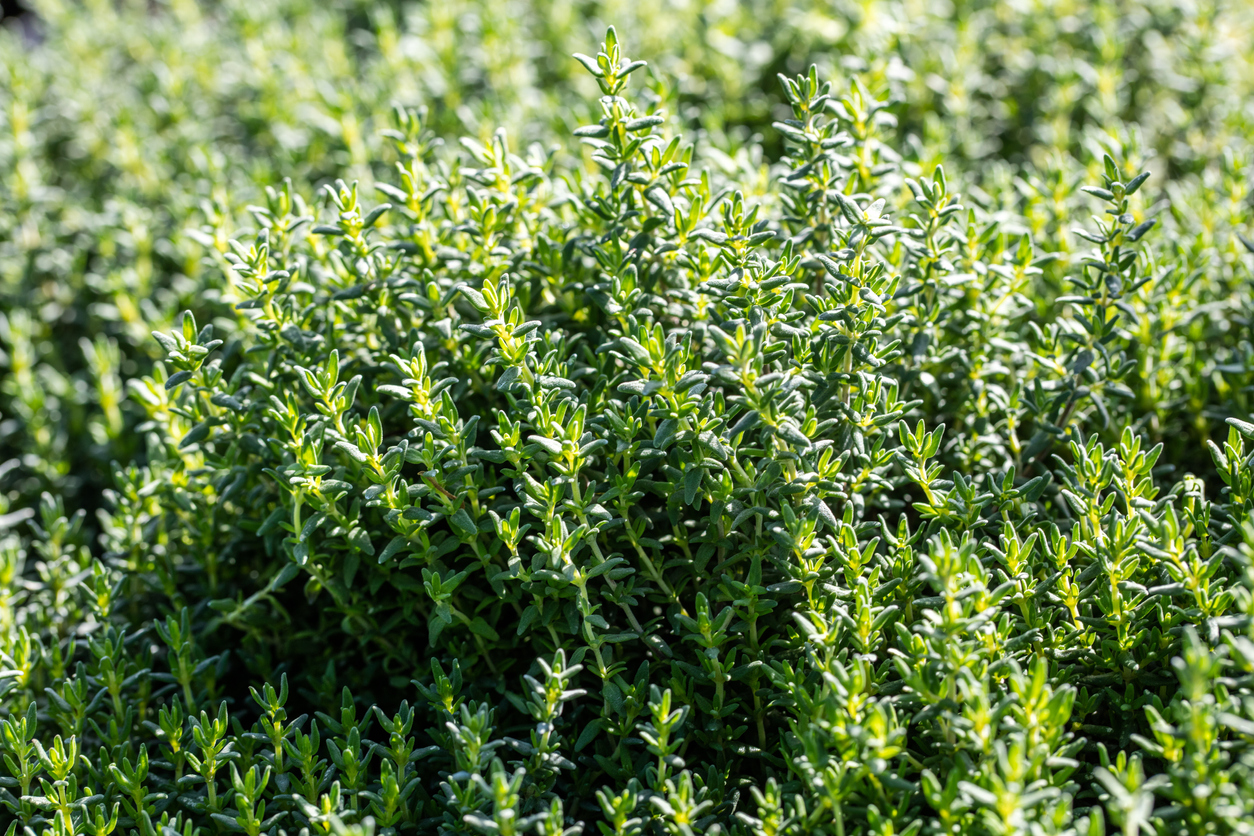Understanding Rosemary & Thyme: Flavor Profiles And Culinary Applications

Table of Contents
The Distinctive Flavor Profiles of Rosemary and Thyme
Understanding the individual flavor profiles of rosemary and thyme is key to unlocking their culinary potential.
Rosemary's Flavor Profile
Rosemary boasts a strong, pungent aroma and flavor, often described as slightly piney, camphoraceous, and even slightly bitter. This robust character makes it an ideal counterpoint to rich, fatty meats, lending a sophisticated depth to the dish. Its strong, resinous notes make it a staple in Mediterranean cuisine.
- Specific Flavor Notes: Resinous, woody, earthy, slightly bitter, camphoraceous
- Ideal Pairings: Lamb, chicken, pork, roasted potatoes, hearty vegetables
- Regional Uses: Italian (especially Tuscan), French, Greek, Spanish
Thyme's Flavor Profile
In contrast to rosemary's bold character, thyme offers a more delicate and subtly sweet flavor profile. Its slightly lemony and minty undertones lend versatility to a wide range of dishes. Different thyme varieties, such as lemon thyme, offer varying intensities of flavor.
- Flavor Notes: Earthy, slightly sweet, minty, subtly lemony
- Ideal Pairings: Soups, stews, roasted vegetables, eggs, chicken, fish
- Regional Uses: French (especially Provençal), English
Rosemary and Thyme Together
The magic truly happens when rosemary and thyme are combined. Their complementary flavors create a synergistic effect, enriching the overall taste experience. The strong, pungent rosemary balances beautifully with thyme's subtle sweetness, creating a complex and aromatic flavor profile perfect for many dishes. For example, a roast chicken seasoned with both herbs offers a depth of flavor that neither herb alone could achieve.
Culinary Applications of Rosemary and Thyme
Both rosemary and thyme find their place in a vast array of culinary applications.
Rosemary in Cooking
Rosemary's robust flavor holds its own in hearty dishes.
-
Roasted Meats: Rosemary is a classic pairing for lamb, chicken, and pork, imparting a wonderful depth of flavor when used in roasting.
-
Vegetables: Toss roasted potatoes or root vegetables with rosemary for an earthy and aromatic side dish.
-
Bread and Pastries: Rosemary adds a surprising and delightful touch to bread and focaccia.
-
Marinades and Sauces: Its strong flavor lends itself well to marinades and sauces for grilled meats.
-
Recipe Examples: Rosemary Roasted Lamb with Garlic and Potatoes, Rosemary Focaccia, Rosemary-Garlic Chicken.
Thyme in Cooking
Thyme's subtle yet distinctive flavor makes it a versatile addition to countless dishes.
-
Soups and Stews: A sprig or two of thyme adds depth and complexity to soups and stews, enhancing the overall flavor profile.
-
Stuffings and Fillings: Thyme is a classic ingredient in stuffing for poultry and other meats.
-
Sauces and Dressings: It brings a delicate herbal note to sauces and dressings.
-
Eggs and Omelets: Adding a pinch of thyme to scrambled eggs or an omelet elevates the dish to a new level.
-
Recipe Examples: Classic French Onion Soup, Chicken and Vegetable Stew with Thyme, Thyme-Infused Vinaigrette.
Combining Rosemary and Thyme
Many dishes benefit from the combined power of rosemary and thyme. Consider these combinations:
- Roasted Chicken with Rosemary and Thyme: A classic combination that elevates the flavor of roast chicken to new heights.
- Herb-Roasted Vegetables: Toss your favorite vegetables with both rosemary and thyme for a deeply flavorful side dish.
- Homemade Bread: Add both herbs to your favorite bread recipe for a fragrant and aromatic loaf.
Growing and Storing Rosemary and Thyme
These aromatic herbs are relatively easy to grow, either in the garden or in pots. Rosemary prefers full sun and well-drained soil, while thyme thrives in similar conditions. Proper storage is crucial for preserving their flavor and aroma. Fresh herbs should be stored in the refrigerator, wrapped in a damp paper towel. Dried herbs should be stored in an airtight container in a cool, dark place.
Buying fresh herbs at a farmers market is a wonderful way to ensure quality and freshness.
Conclusion
The unique flavor profiles of rosemary and thyme, along with their diverse culinary applications, make them indispensable herbs for any cook. Their versatility allows them to enhance both simple and sophisticated dishes, adding depth, complexity, and aromatic delight. Start exploring the world of rosemary and thyme! Experiment with these flavorful herbs in your cooking, try some of the recipes mentioned above, or discover new culinary adventures. Unlock the culinary potential of rosemary and thyme and elevate your dishes to a new level of deliciousness. Discover the best rosemary and thyme recipes and enhance your cooking with these amazing herbs!

Featured Posts
-
 How To Achieve The Good Life A Step By Step Approach
May 31, 2025
How To Achieve The Good Life A Step By Step Approach
May 31, 2025 -
 The Good Life A Journey Of Self Discovery And Fulfillment
May 31, 2025
The Good Life A Journey Of Self Discovery And Fulfillment
May 31, 2025 -
 Blockchain Security Enhanced Chainalysis Acquisition Of Alterya
May 31, 2025
Blockchain Security Enhanced Chainalysis Acquisition Of Alterya
May 31, 2025 -
 Hangtown Motocross Chase Sextons Injury And The Implications
May 31, 2025
Hangtown Motocross Chase Sextons Injury And The Implications
May 31, 2025 -
 Nyt Mini Crossword Clues And Answers Wednesday April 9
May 31, 2025
Nyt Mini Crossword Clues And Answers Wednesday April 9
May 31, 2025
